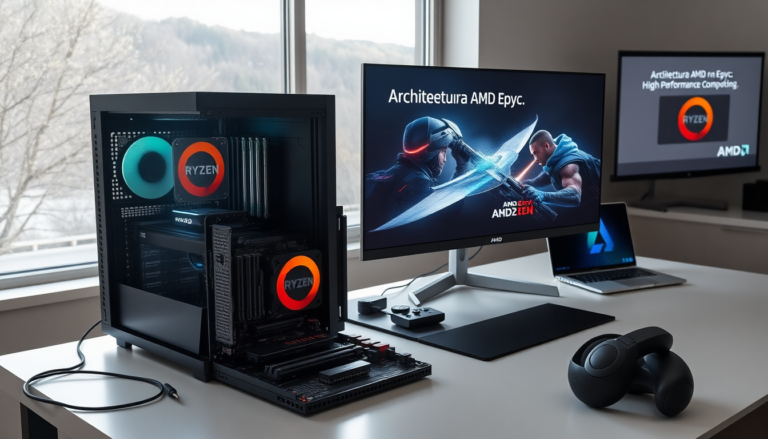Argomenti trattati
Imagine a world where gaming and high-performance computing merge seamlessly, driven by architecture that not only meets but exceeds expectations. That’s exactly what AMD is doing with its Ryzen™ and Epyc™ series. These marvels of engineering are not just chips; they represent a revolutionary leap in how we think about performance and efficiency in technology. I remember when I first got my hands on an AMD Ryzen processor—the difference was night and day compared to what I had used before. It’s like upgrading from a bicycle to a sports car.
The architecture behind AMD’s success
At the heart of AMD’s Ryzen and Epyc architectures lies the cutting-edge Zen microarchitecture. This design is not just about cramming more transistors into a chip; it’s about optimizing how those transistors work together. By utilizing a chiplet architecture, AMD can produce high-performance CPUs that are both scalable and energy-efficient. This means more cores and threads without the typical heat and power issues that often plague traditional designs. Can you imagine the possibilities when you can push your gaming rig or server to the limits without sacrificing stability?
But what sets AMD apart is not just the hardware; it’s their commitment to software enhancements. The integration of features like Precision Boost and Smart Access Memory allows for real-time performance adjustments that adapt to your needs. This is something I didn’t fully appreciate until I started playing games that pushed my system to its limits. The smoothness and responsiveness were astonishing.
Gaming and productivity redefined
When it comes to gaming, the AMD RDNA™ architecture stands out. Designed specifically for high-performance gaming, it provides an immersive experience with stunning graphics and fluid gameplay. I recall a gaming session where I switched from an older GPU to one based on RDNA. The graphics were so lifelike that I almost forgot I was sitting in my living room! AMD’s RDNA architecture not only enhances visual fidelity but also improves power efficiency, which means longer gaming sessions without your system overheating.
On the productivity side, AMD’s Epyc processors are revolutionizing data centers and enterprise solutions. With scalable performance that can handle multi-threaded workloads, these processors are becoming the go-to choice for organizations looking to maximize their computing power. I’ve seen firsthand how businesses leverage Epyc chips to run complex simulations and manage large databases, significantly reducing processing times and operational costs. It’s incredible what a well-designed architecture can achieve.
Future trends and innovations
Looking ahead, the landscape for AMD is bright. The company is continually pushing boundaries, exploring new technologies such as 3D chip stacking and advanced AI integration to further enhance performance. Personally, I believe we’re on the brink of a new era in computing where efficiency and power will redefine our expectations. AMD’s focus on innovation means we can expect even more groundbreaking technologies in the future.
As many in the tech community know, the competitive landscape is fierce. Intel and other players are always on the horizon, but AMD’s strategic moves keep them ahead of the curve. The recent release of their latest generation CPUs has everyone buzzing, and I can’t help but feel excited about what’s next. The revolution is real, and it’s happening right in front of us.

